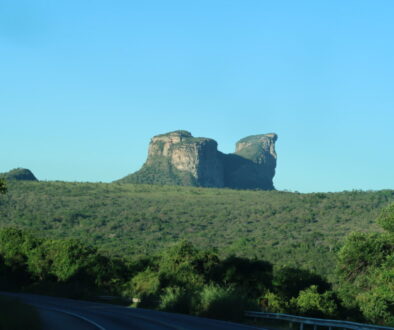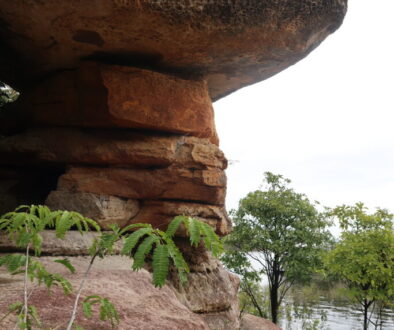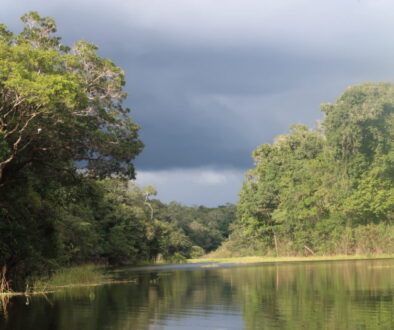Welcome to Rio – a city of Maravilhosa
Basically, we arrived on time. Nevertheless, the pilot had to go another round before landing, because the plane afront of us had a birdstrike and the crew was clearing the runway. No worries… (How often does a birdstrike happen?). As usual at international airports, it was quit a walk to the exit. Around 7 AM, we had 24 *C. A bit different from back home. Now our journey through the fascinating natural landscapes of Brazil began.
Our driver (with the personal travel support from Evaneos, we choose the lazy option to get al our transfers pre-arranged) asked us about our plans. After an almost 12 hour nightflight. But he was a kind of right: our rooms won’t be available until 2PM. Thus, we decided to take a 3-hour drive-along-tour with the driver. First stop should be our B&B, but somehow, the tour started along the way overthere. We saw the harbour and the 13km long bridge across the bay, we saw the samba drum, the (new) Metropolitan Cathedral of Saint Sebastian and the aqueduct. We drove through some favelas. The statue of christ stayed in the clouds, but regularly we had a sneak view of Sugar Loaf Mountain. Finally, we reached the B&B, dropped our luggage, changed our cloth. And left for a second round.
Just around the corner Musea de Chacara do Céu offered a great view. Chácara refers to the large gardens of the plot. The Park of Ruins is kind of part of it.
The center of Sant Teresa is not big, but had a great flair. Zitting there, enjoy watching people, get impressed by al those colourful walls, controlling the urge to take the cable car until to the last stop.
The streets between the townships and although te man roads in between are green, it’s a pleasure to the eye.
About the infrastructure: Main roads are connecting the different parts of the town, often via a tunnel under the townships and favelas. Within the townships, the streets climb and wind around the mountains, heavily packed with houses. The old city, Copacabana, Ipanema and some other parts flat along the coast and the bay. There are some metro lines, a variety of public busses. And they restoring the tramlines. It’s a challenge to find your way around. The train (Swiss model) up to the statue of Christ – according to our guide – was build in 1855. The statue followed in 1931. The cable cabin (German build) up to Sugar Loaf is from 1915, the hotel Copacabana Palace (French architecture) from 1923. In Brazil, they build for tourism, that didn’t even exist in that time. Some vision.
We went up to a viewing point to see the statue of Christ in full glory. And of course Sugar Loaf in all its beauty. Therefore we had to drive through the first part of the National Park Tijuca, that crosses a big part of Rio. A national park, right in town. We even saw a little grey monkey along the road.
From there, we went to Ipanema, Leblon and Copacabana. Three townships, three beaches. Alle a different vibe. Personally, I liked the stretch of Flamengo Park the best. It’s at the bay, not at the ocean, but the greenery and landscaping are nice.
When we met Isabella of Brazil (statue at a main road), our driver told us a bit more about the country and its historie.
Isabella was de daughter of Pieter II of Brazil, the last emperor. She was the one to sign the ‘Golden Law’ that put an end to slavery in Brazil. Other than in a lot of countries, Europeans, Africans and natives really mixed, our driver told. Also in this way, it’s a colourful country. (We didn’t discuss the implications this have on the daily life). At the war memorial, he told us, that Brazil at the end of WWII was part of the alliance, fought from Italy against the regime, even despite the Japanese enclosure in the country. Never knew.
Time to take the way back to Santa Teresa, where our B&B is. But not without lunch. Our driver dropped us at the Portella in the center of the neighbourhood. Back at the B&B, we had our siesta and closed the day with a drink at the pool, with a beautiful view of Sugar Loaf Mountain.



















